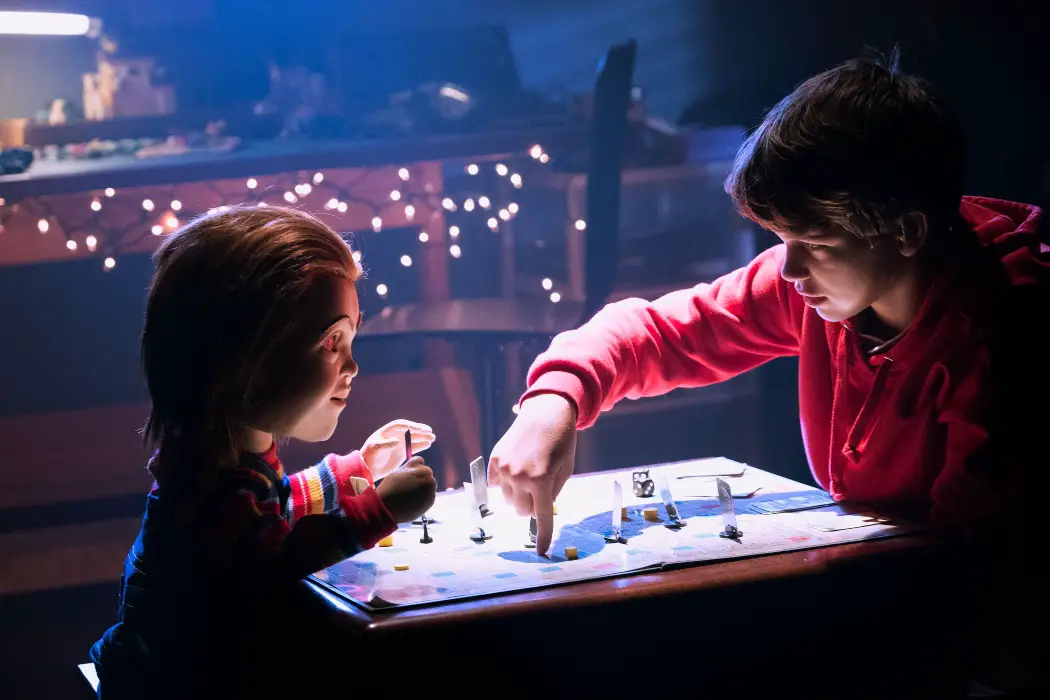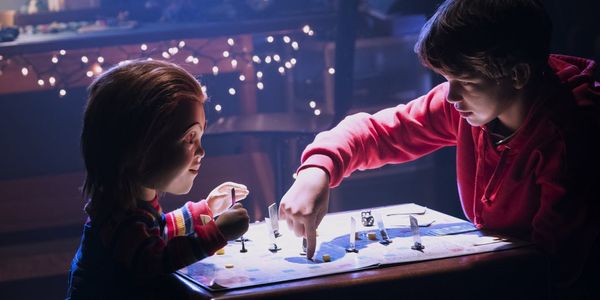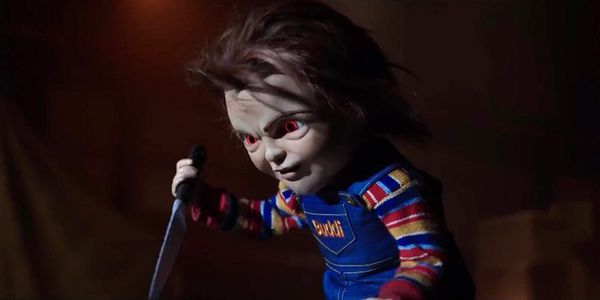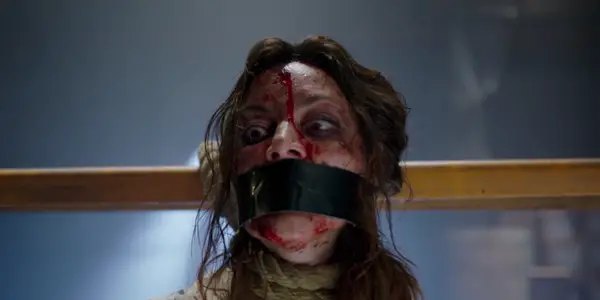CHILD’S PLAY: Connect, Sync & Destroy

Just a plain ol' country boy living in the big…
Who would have guessed that in 1988, Tom Holland would be responsible for not only one of the longest running franchises in horror movie history, but for the creation of one of the world’s most recognisable and treasured horror movie villains, Chucky. Therefore, it was only a matter of time before this ginger doll of death was plucked from the line of cult characters to be rebranded for a new generation of bloodthirsty millennials.
It’s understandable that there still remains an air of uncertainty when the word ‘remake’ is uttered, or more specifically, when the rumour finally spreads that Hollywood has its hands on an iconic figure, usually causing a wave of genre-buffs to snarl like savage dogs and industry professionals to sigh in disappointment. This is for a number of reasons: the main one being that a sense of nostalgia is generally lost in translation. But every so often, unexpected surprises do come along, and Norwegian filmmaker Lars Klevberg proves that he might just have what it takes to reinvigorate the familiar franchise and a new-age legacy for Chucky.
Unwrapping The New Package
Earning minimum wage at a department store, Karen Barclay (Aubrey Plaza) is struggling to make ends meet while balancing her role as a cool-cat mother and unappreciated girlfriend. One day at work, Karen blackmails a fellow co-worker into giving her a faulty Buddi doll as a birthday present for her son, Andy (Gabriel Bateman). At first unimpressed with his newfound friend, Andy soon comes to realise that his particular doll is far more advanced than the infomercials on TV would suggest…and that’s when the mayhem starts.

It goes without saying that the biggest shoes to fill here, would be those of Brad Douriff’s (the original voice of Chucky), but thankfully, Mark Hamill’s new portrayal of Chucky is vastly different from Douriff’s 88’ interpretation, finding a clever balance between machine and life-like emotion, his animated voice work is really something special and brings a whole new perspective to the killer-doll sub-genre. While less aggressive and comically unhinged than Douriff, Hamill manages to create subtle twinges of discomfort by using vocal inflections that are both simultaneously caring and creepy, hinting that behind those electric blue eyes there’s something more sinister brewing for the fate of the Barclay family.
Plaza and Bateman make an offbeat yet believable mother-son duo; Plaza with her renowned wit and Grinch-like grin match the tongue-in-cheek vibe of Klevberg’s vision, and it’s refreshing to see her step into a more grounded role that further reveals her talent as a dramatic actress. Needless to say, it’s Bateman that really steals the show here, displaying an emotional range and on-screen energy that is consistently impressive, truthfully conveying the angst of preteen isolation and the constant struggle to find his place in the world.
Batteries not Included
At the peak of the digital revolution, it comes as no surprise that the Internet and advancements in technology underpin narratives in a high percentage of horror films, and sometimes even the style of filmmaking itself. For example, Stephen Susco’s Unfriended: Dark Web highlighted the terrifying consequences of exploring the unregulated depths of the deep web by shooting entirely through desktop computer cams and live iPhone streaming, and Adam Wingard’s Blair Witch followed a group of young adults exploring the woods trying to capture footage of the legend herself by using mostly overhead drones, GPS systems and Go-Pro’s.
Yet, it’s one thing when the plot of a horror film shows the negative consequences of using technology as its foundation for a good scare, but it’s another thing when a horror film uses technology to drive the evil conscience of a killer doll, so surely that would seem too absurd for today’s audiences…right?

In hindsight, living in an age where flying drones are delivering pizzas and electric cars are driving themselves, the idea of a robotic doll going on a murderous rampage is strangely becoming less farfetched, which is why our new version of Chucky poses as a beacon of warning; not through showing the violence he’s capable of, but by emphasising how society’s dependence on technology is blinding us from our own ability to think for ourselves. It’s clear from the get go that Klevberg understands this concept, in that audiences these days won’t take a killer doll seriously unless it offers some insight into the cognitive patterns of the millennial mind-set.
If It Ain’t Broke, Don’t Fix It
The temptation to draw comparisons between originals and remakes is unavoidable and sometimes even necessary, but if one was to jump on board with the notion that ‘originality is dead’, it would be unfair to say that this remake doesn’t have something to offer or obtain the power to surpass technical aspects of its source material. While Klevberg shows glimpses of superiority up against Holland’s original, it’s evident that he’s still to define his signature style as a filmmaker, at least from an artistic perspective.

At a taut 88 minutes, the movie is competently shot and bolstered by an effective new score, but the script doesn’t offer much time for well-rounded characters. However, Klevberg makes just enough time to prove that the victims of Chucky deserve their grisly fates, which is a just enough reason to keep watching for the entertainment factor alone. There’s also a self-aware humour present throughout (almost to the point of self-parody) where any intended build of tension struggles to peak because we are already on board with the silliness of the situation at hand. In retrospect, Holland’s original wasn’t without its flaws, especially from a technical standpoint, so anything Klevberg lacks or overdoes here somehow balances out.
Child’s Play: Conclusion
Similarly to Luca Guadanino’s reimagining of Suspiria, which caught audiences off guard by confidently departing from its iconic source material, Child’s Play is much the same in that it takes the bare bones of the original and builds upon a familiar concept with a contemporary relevance. The choice to retell an already ridiculous premise with a techno-twist works as an advantage here, by cooking up a different flavour of horror – one that offers an equal serving of wacky humour, buckets of gore and just enough plot alterations to keep things fresh.
While not as subversive as Holland’s cult classic, Klevberg’s polished version is a delightfully vicious ode to its campy origins, proving that a remake can be worthwhile if made with enough creativity and a current social awareness.
What did you think of the new Child’s Play remake? And what makes a good remake for you? Let us know in the comments below.
Child’s Play was released in the US and the UK on June 21st, 2019. For other release dates, click here.
Does content like this matter to you?
Become a Member and support film journalism. Unlock access to all of Film Inquiry`s great articles. Join a community of like-minded readers who are passionate about cinema - get access to our private members Network, give back to independent filmmakers, and more.
Just a plain ol' country boy living in the big city with even bigger dreams. Film obsessed and 100% dedicated to surrounding myself with all forms of art 24/7. I love to write as a creative outlet, and share my thoughts and ideas about the world of cinema with likeminded individuals.













